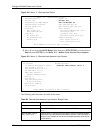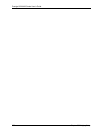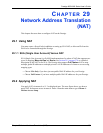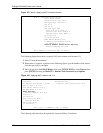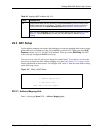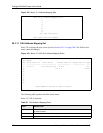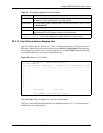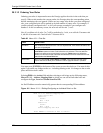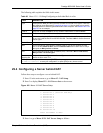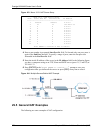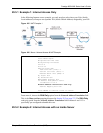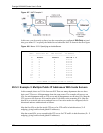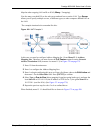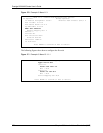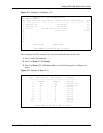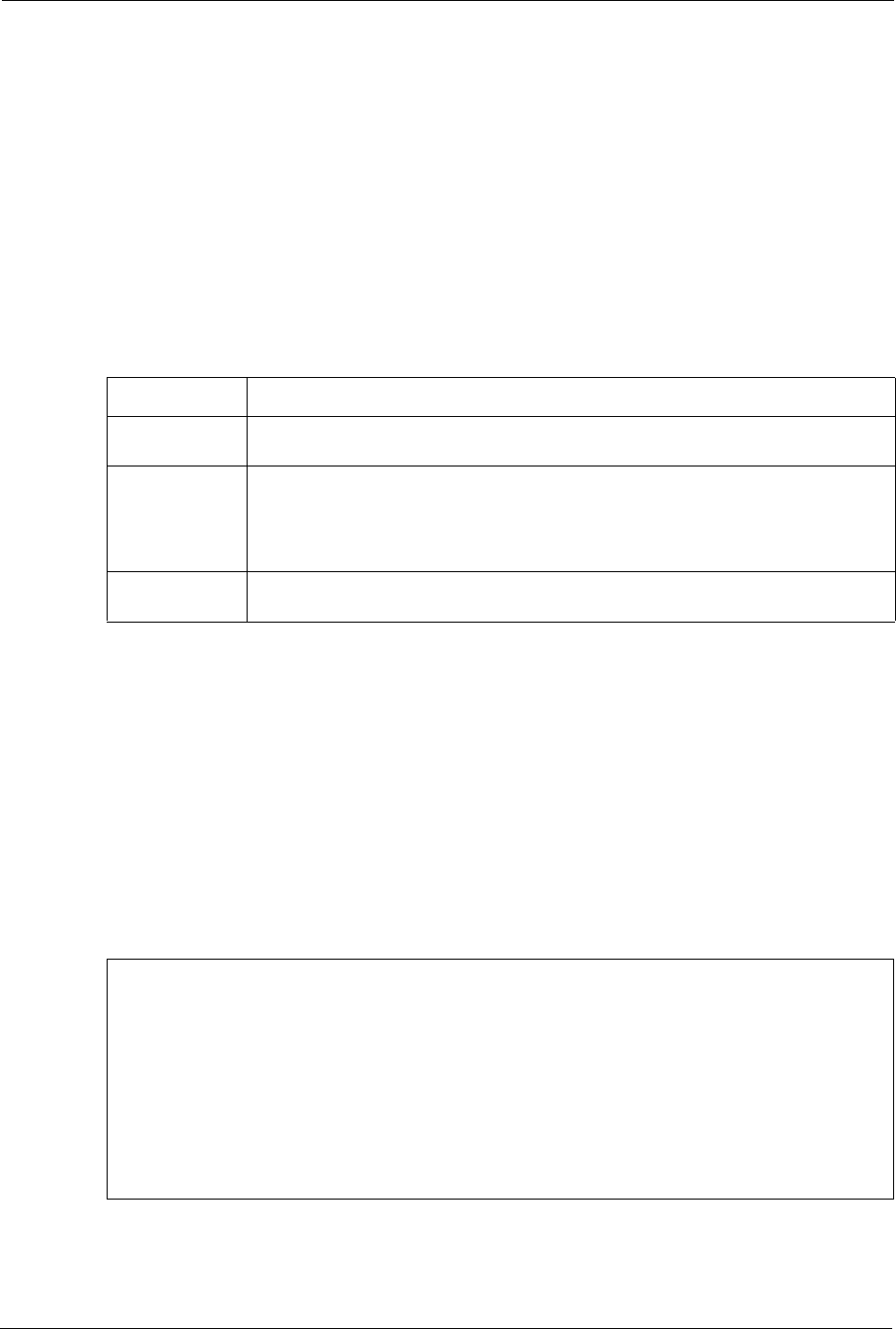
Prestige 660H/HW Series User’s Guide
273 Chapter 29 Network Address Translation (NAT)
29.3.1.3 Ordering Your Rules
Ordering your rules is important because the Prestige applies the rules in the order that you
specify. When a rule matches the current packet, the Prestige takes the corresponding action
and the remaining rules are ignored. If there are any empty rules before your new configured
rule, your configured rule will be pushed up by that number of empty rules. For example, if
you have already configured rules 1 to 6 in your current set and now you configure rule
number 9. In the set summary screen, the new rule will be rule 7, not 9.
Now if you delete rule 4, rules 5 to 7 will be pushed up by 1 rule, so as old rule 5 becomes rule
4, old rule 6 becomes rule 5 and old rule 7 becomes rule 6.
Table 92 Menu 15.1.1 First Set
FIELD DESCRIPTION
Set Name Enter a name for this set of rules. This is a required field. If this field is left blank, the
entire set will be deleted.
Action The default is Edit. Edit means you want to edit a selected rule (see following field).
Insert Before means to insert a rule before the rule selected. The rules after the
selected rule will then be moved down by one rule. Delete means to delete the
selected rule and then all the rules after the selected one will be advanced one rule.
None disables the Select Rule item.
Select Rule When you choose Edit, Insert Before or Delete in the previous field the cursor
jumps to this field to allow you to select the rule to apply the action in question.
You must press [ENTER] at the bottom of the screen to save the whole set. You must do this
again if you make any changes to the set – including deleting a rule. No changes to the set take
place until this action is taken.
Selecting Edit in the Action field and then selecting a rule brings up the following menu,
Menu 15.1.1.1
- Address Mapping Rule in which you can edit an individual rule and
configure the Type, Local and Global Start/End IPs.
An End IP address must be numerically greater than its corresponding IP Start address.
Figure 161 Menu 15.1.1.1 Editing/Configuring an Individual Rule in a Set
Menu 15.1.1.1 Address Mapping Rule
Type= One-to-One
Local IP:
Start=
End = N/A
Global IP:
Start=
End = N/A
Server Mapping Set= N/A
Press ENTER to Confirm or ESC to Cancel:



